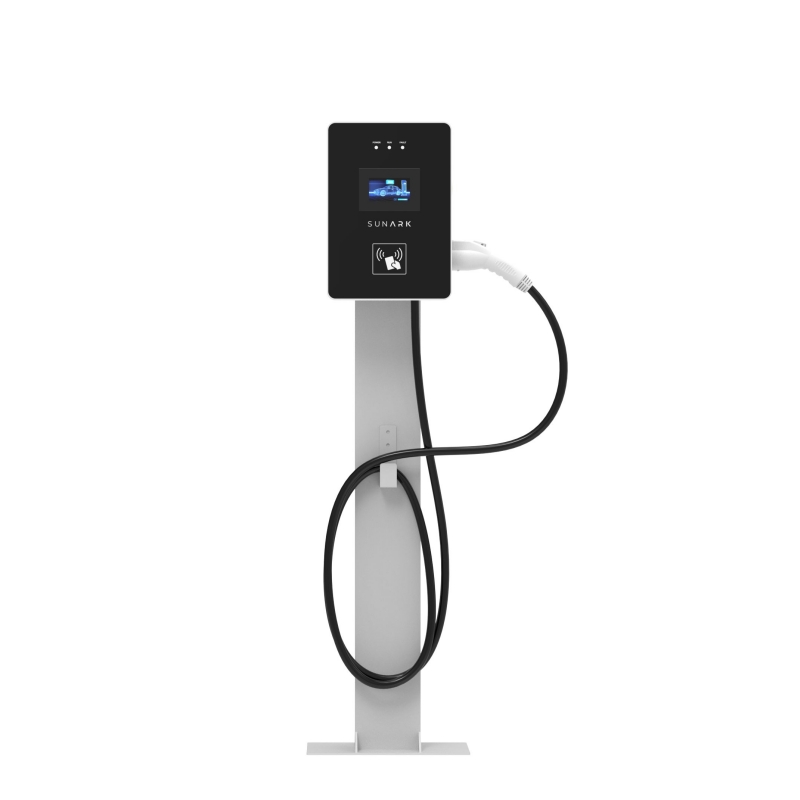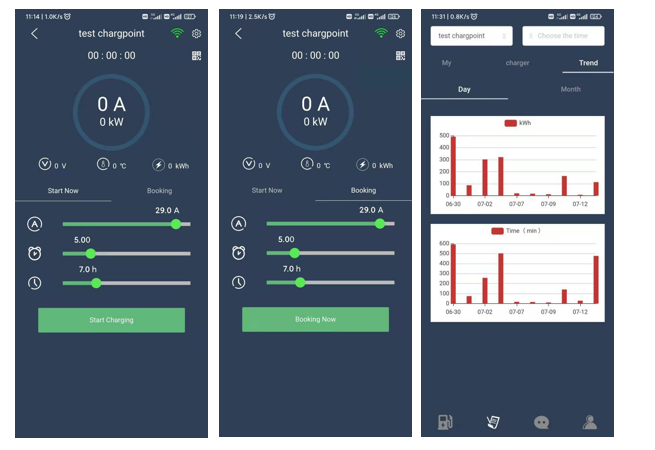It's worth noting that the specific components and features of AC/DC charging stations can vary depending on the manufacturer, charging standards supported (e.g., CHAdeMO, CCS, or Tesla Supercharger), and the power output capabilities (e.g., Level 2 or Level 3 fast charging).
Standard:
SAE Standard / IEC StandardConnector type:
Type 1 / Type 2Connector Mechanical Operating Life:
≥10000 times
An AC charger, also known as an Alternating Current charger, is a type of charger used to recharge electric vehicles (EVs) or plug-in hybrid electric vehicles (PHEVs by converting alternating current from the power grid into the direct current needed by the vehicle's battery. AC chargers generally have a lower charging power compared to DC fast chargers, but they are more common in residential, commercial, and public locations.

Here are some key features of AC chargers:
Charging Power: AC chargers typically provide charging power ranging from 3.3 kW to 22 kW, although higher-powered AC chargers are also available.
Type of Connector: AC chargers use standardized connectors such as the Type 2 (Mennekes) connector in Europe, the J1772 connector in North America, and the Type 1 connector in Japan.
Charging Time: The charging time with an AC charger depends on the battery capacity of the vehicle and the charging power of the charger.
Locations: AC chargers can be found in various locations, including homes, workplaces, parking garages, shopping malls, and public charging stations.
Cost: AC chargers are generally less expensive compared to DC fast chargers, making them more accessible for residential and commercial installations.

A DC charger, also known as a DC fast charger or a DC charging station, is a device used to quickly recharge electric vehicles (EVs) using direct current (DC) power. Unlike AC chargers, which convert alternating current from the power grid to the required DC voltage, DC chargers directly supply DC power to the EV's.
DC chargers are capable of delivering a significantly higher charging power compared to AC chargers, allowing for faster charging times. They are commonly used at public charging stations along highways, in commercial areas, or at EV service centers. DC chargers typically come in different power levels, such as 50 kW, 100 kW, 150 kW, or even higher, depending on the specific model and manufacturer.
Charging an EV with a DC charger is a straightforward process. The vehicle's charging port is connected to the DC charger using a compatible connector plug, such as CHAdeMO, CCS (Combined Charging System), or Tesla Supercharger plug. The charger communicates with the vehicle to negotiate the charging power and manages the transfer of electricity from the grid to the EV battery efficiently.
Due to the higher charging power and direct connection to the battery, DC chargers can replenish the battery capacity significantly faster than AC chargers. Depending on the EV model and battery capacity, a DC fast charger can provide a substantial charge in as little as 30 minutes, making them especially useful for long-distance travel or quick top-ups during busy schedules.

Monitoring EV chargers including various methods:
Charger Management Software: Many charging station providers offer software platforms that allow users to monitor and manage their EV chargers remotely. These platforms provide real-time data on charging sessions, energy usage, and payment processing.
Mobile Apps: Some charging station manufacturers provide companion mobile applications that allow users to monitor their charging sessions, check the status of chargers, and receive notifications or alerts.
Networked Charging Stations: Charging stations connected to a network can be monitored centrally by charging station operators or service providers. They can access data on charging status, energy consumption, and any faults or maintenance requirements.
Energy Management Systems: In commercial or public charging installations, energy management systems may be used to monitor and optimize the charging process. These systems can gather data from multiple chargers, manage charging schedules, and balance energy demand.
FAQs:
Q1: Do you support OEM/ODM?
A:Definitely, OEM&ODM service is supported with a certain quantity,including customize logo,package and label;
Q2: What's the production time?
A: The production time is normally 15 working days. but we will always prepare some stocks for popular models.
Q3: Can you provide DDP service?
A:Yes, if you are a personal customer and don't want to deal with the customs, we can provide DDP service to your address.
Q4: What about the warranty and how to claim?
A: Warranty period are 5 years since you receive the product, our professional after-sales team will deal with all warranty issues.